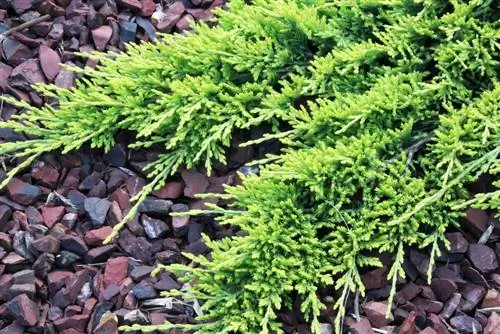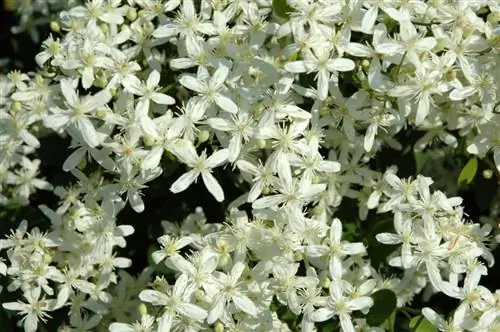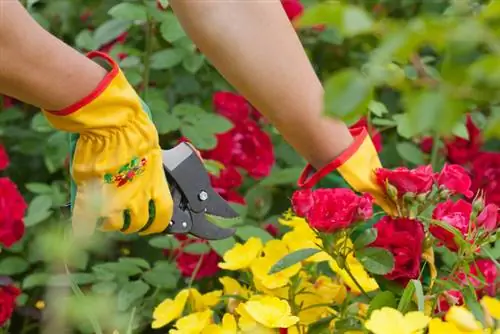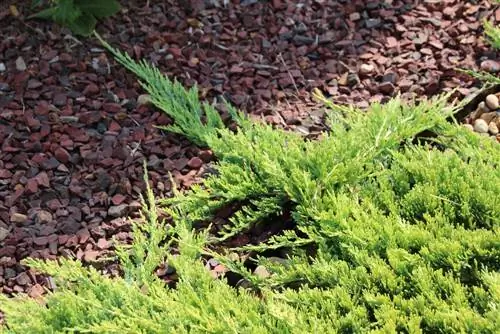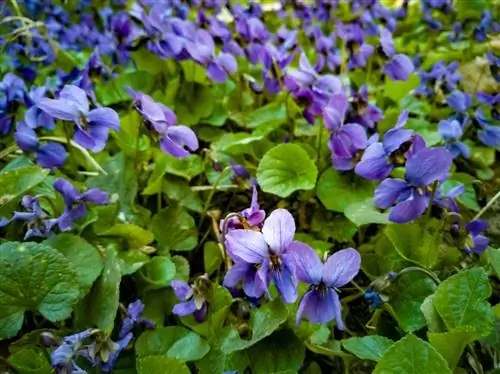- Author admin [email protected].
- Public 2023-12-16 16:46.
- Last modified 2025-01-23 11:21.
Juniper is characterized by a high degree of variability when it comes to use. The shrubs can be planted not only as a solitary topiary or in a hedge but also as ground cover. But not every type is suitable.
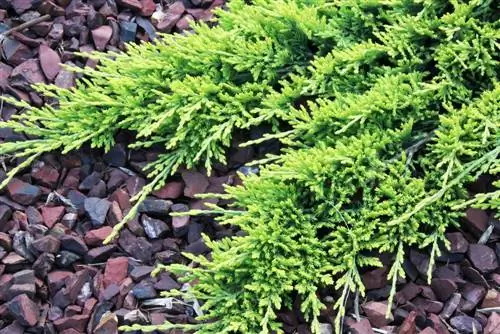
Which types of juniper are suitable as ground cover?
Juniper ground cover plants are suitable for greening areas and embankments, especially the creeping juniper (Juniperus horizontalis). A location in full sun, poor, permeable soil and a planting distance of 50-80 cm is ideal.
Ground cover species and varieties
Within the genus Juniperus there are some species that develop flat shoots and reach low heights. These shrubs are ideal as ground cover. A popular species is the creeping juniper (Juniperus horizontalis), which grows between 20 and 50 centimeters high. With a width of 120 to 150 centimeters, the tree covers barren soils in sunny locations. Its branches grow slightly offset from one another, creating dense carpets of needles.
Good ground cover varieties:
- Juniperus communis ‘Repanda’
- Juniperus communis ‘Hornibrookii’
- Juniperus communis ‘Green Carpet’
Location requirements
Like all juniper species, the ground cover plants prefer a location in full sun where they can develop freely. The ideal soil offers lean conditions and a loose structure. A high proportion of sand ensures optimal permeability, as the cypress plants cannot tolerate waterlogging. The substrate may contain lime. The vicinity of other trees and shrubs should be avoided as Juniperus cannot tolerate root pressure.
Planting spacing
So that the tree develops a dense carpet, you should maintain a distance of 50 to 80 centimeters, depending on the variety. There is space for around two to four plants per square meter. The juniper develops a deep root system with which the tree draws nutrients and water from the lower soil layers. In this way, the trees can cope with prolonged drought and specimens planted more densely do not hinder their growth.
Usage
Ground cover species are suitable for greening large areas or embankments. Dry and sunny terraced slopes with a southern orientation provide optimal growing conditions. You can also plant the low shrubs on a stone wall so that the creeping shoots hang loosely over the stones.
You can create exotic Japanese gardens with low-growing Juniperus species. The ground cover plants are only suitable as underplanting if the woody plantings offer light conditions. Creeping junipers can also be planted in window boxes or containers.

